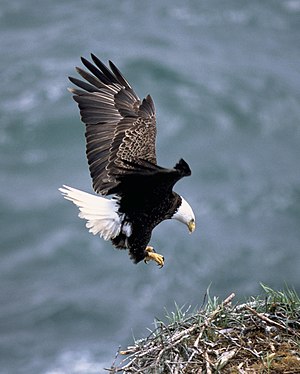Karl E. Mundt National Wildlife Refuge
| Karl E. Mundt National Wildlife Refuge | |
|---|---|
IUCN category IV (habitat/species management area) | |
| Location | Gregory County, South Dakota / Boyd County, Nebraska, United States |
| Nearest city | Pickstown, SD |
| Coordinates | 43°1′16″N 98°31′53″W / 43.02111°N 98.53139°W |
| Area | 1,085 acres (4.39 km2) |
| Established | December 19, 1974 |
| Governing body | U.S. Fish and Wildlife Service |
| Website | Karl E. Mundt National Wildlife Refuge |
Karl E. Mundt National Wildlife Refuge is located mostly in the southern part of the

The Karl E. Mundt NWR is centered on an area below the Ft. Randle Dam which is located on the Missouri River, and is maintained by the
Wildlife
Here, an abundance of fish such as
Though the refuge is closed to the public, bird watching is available from the Ft. Randall Dam and a kiosk there provides information for the best times and locations for viewing various species. The bald eagle is best seen during the winter, especially between the months of November to March, and are uncommon for most of the rest of the year, though a few nesting pairs remain on the refuge year round. Generally, the harshest winters have the largest concentrations of eagles, as they prefer to be near to a readily available food source to maximize calorie intake. Over 200 other species of birds have been spotted here including White pelicans, Franklin's gull and Double-crested cormorants . White-tailed deer, Mule deer, coyotes, bobcat, skunk and mink are but a few of the 50 species of mammals observed in the refuge. Plans to expand the refuge are nearing final approval and it is hoped that another 2,000 acres (8.09 km2) may be added.
References
External links
- "Karl E. Mundt National Wildlife Refuge". U.S. Fish and Wildlife Service. Retrieved 2016-06-15.
- "Eagle Facts". U.S. Fish and Wildlife Service. Archived from the original on 2006-09-27. Retrieved 2006-08-16.
- "U.S. Fish and Wildlife Service Examines Expansion of Karl E. Mundt National Wildlife Refuge". U.S. Fish and Wildlife Service. Retrieved 2006-08-16.



